The Gulf of Paradise
Ever heard of Camogli (pronounced cah-MO-lyee)? If not, I’m going to let you in on a secret. It’s a small Italian fishing village on the aptly named Golfo Paradiso (Gulf of Paradise), about one hour by train south-east of Genova in northern Italy.
Having been in Genova last week for Slow Fish, I was craving more sea and sunshine. My original idea was to stay in Nervi, an outer suburb of Genova, until a friend of mine suggested I visit Camogli instead.
What captivated my imagination was the walk he described from Camogli to Portofino, one of the better known picturesque villages along this glorious coastline.
Years ago I had walked the Cinque Terre (five terraced, fishing villages on the Levante Riviera, Liguria) from Monterosso to Vernazza on a warm sunny day in May, a walk that had long lingered in my memory and one which I promised myself I would do again one day.
That walk is much better known and can get pretty crowded especially during the warmer months.
I suspect the Italians have kept quiet about Camogli and the walks through the the parkland on the Portofino pensinsula to avoid the hordes of tourists who flock to the Cinque Terre. Camogli is the summer retreat of well-heeled Milanese and Turinese, many of whom return year after year for their annual dose of sea, sun, and seafood (oh, and pesto, cheese focaccia and camogliesi al rhum – rum balls), and I can understand why they want to keep it to themselves.
Camogli is about an hour north of the Cinque Terre and like those picure-postcard villages, is lined with palazzi painted in bright terracotta, muted pinks, yellows and lemons with dark green shutters, many of which are surrounded by tromp l’oeil patterns. Apparently the various colours helped the local fishermen easily recognise their homes.
There are various ideas about where the name Camogli originated, but one which appeals to me is that it came from case delle mogli (“house of wives”), which refers to the women who watched over the town while their husbands were away fishing.
During the late Middle Ages Camogli was an important seaport and was known as the “city of a thousand white sails” because its fleet consisted of hundreds of Camogli Tall Ships.
Each year since 1952 a Sagra del Pesce (fish festival) is held in the town on the second Sunday of May (unfortunately I just missed it). Originally the fish were fried in small frying pans and distributed amongst the locals and tourists. Over the years the frying pans got bigger and bigger, so big that in 2011 for the 50th anniversary, a stainless steel pan weighing 28 tons with a diameter of four metres and 6 metre long handle was used to fry 30,000 fish dishes, using 3 tons of fresh fish and 3000L of oil. Apparently a copy of this pan is also used in Yokohama, Japan.
The festival is held in the Piazza Colombo at the northern end of the village. This was my favourite part of the town as it’s where you’ll find the locals with their fishing boats and nets hung out to dry; swaggering Italian men and women eyeing each other off; young boys kicking a soccer ball around the piazza, and narrow medieval stairs and lanes (caruggi) lined with tiny shops.
Here you’ll also find the magnificent twelfth century Chiesa di Santa Maria Assunta and Castello della Dragonara, both of which were built on a rock which was originally separate from the mainland.
Tempted as I was to do the Camogli-Portofino walk, it didn’t take me long to realise it would take up most of my day (at least 5 hours). After enquiring about ferries along the coast, I decided to catch the early morning boat to San Fruttuoso, a miniature fishing cove south of Camogli and walk from there to Portofino, a 2 – 2 1/2 hour walk, far more sensible given my limited time.
The first boat departed 8am and as it pulled into San Fruttuoso, I gasped. Not only was this a glorious swimming cove, but straddled along the back of the beach is an ancient monastery and abbey.
Built by Greek monks in the 10th century, it was rebuilt in the 11th century and renovated over and over until the 16th century.
Named after the martyr bishop Fruttuoso, killed in Catalonia, in 259 AD, Fruttuoso appeared in the dreams of five monks, telling them where to bury his remains, which rest to this day inside this church.
From here I set off on my walk, which was marked along the way by two red painted spots (and just as well because there was no-one else on the path that day!). Up, up, up through a fairly dense wood. Over 700 species of plants grow on this promontory due to mild temperatures and are bizarrely mixed, depending on whether they face north or south. The promontory is also a major bird-migration route between Europe and Africa.
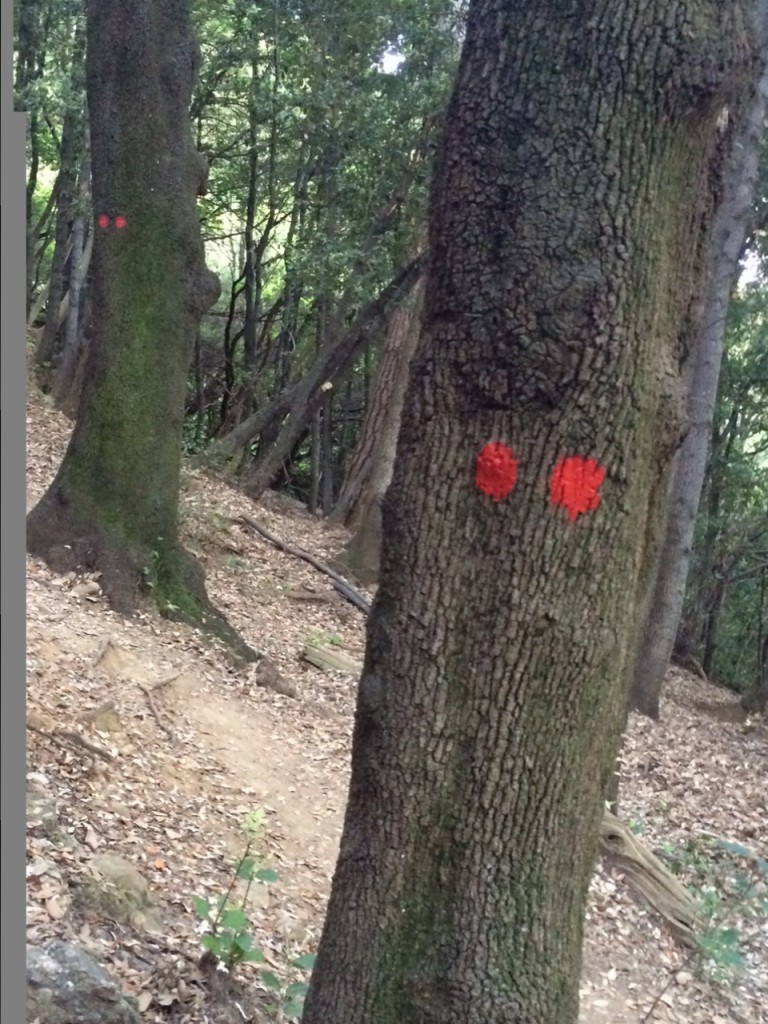
Red spots on trees mark the way; they reminded me of the breadcrumbs left by Hansel and Gretel in the woods
After an hour or so of climbing, I reached the top and from there looked out over the vast sparkling blue sea below. A few boats were out and I could hear the sound of voices.
It wasn’t long before I came across the first hint of human habitation: a lamp post and a gate covered in roses behind which was a just-mown lawn, more roses and vines.
Then it was down, down, down to Portofino along a narrow but well kept road which allowed access for narrow vehicles to reach the top. Each time I turned a corner, there was another magnificent view, either of villas surrounded by well-kept gardens and olive trees and vines, or of the sea below.
By the time I reached Portofino I needed refreshment, something both sweet and bitter, hot and cold. So when I spotted the sign for Affogato (vanilla ice cream drowned in hot espresso coffee) at one the cafes which look out onto the port, I immediately ordered one and sat down. Sitting down was my only mistake that day. When the bill arrived, it was for 10Euros. Well, Portofino is the one of the haunts of the rich and famous especially during the summer months, so beware!
After a stroll around this tiny tourist village, I caught the ferry back to Camogli, via San Fruttuoso, and celebrated my adventures with a delicate dish of Risotto all’onda con gamberoni crude e stracciatell di bufala (soft risotto with prawns and buffalo mozzarella ) and a glass of fresh crisp Vermentino at La Bossa, a restaurant away from the madding crowds.
A perfect ending to a perfect day.
For more information: go here, and also here.
.

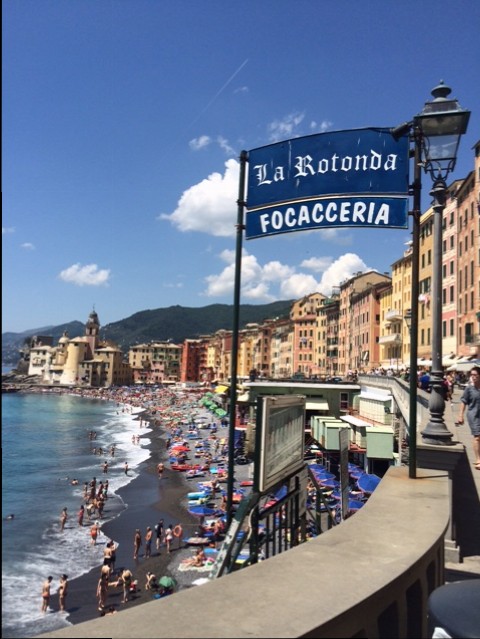
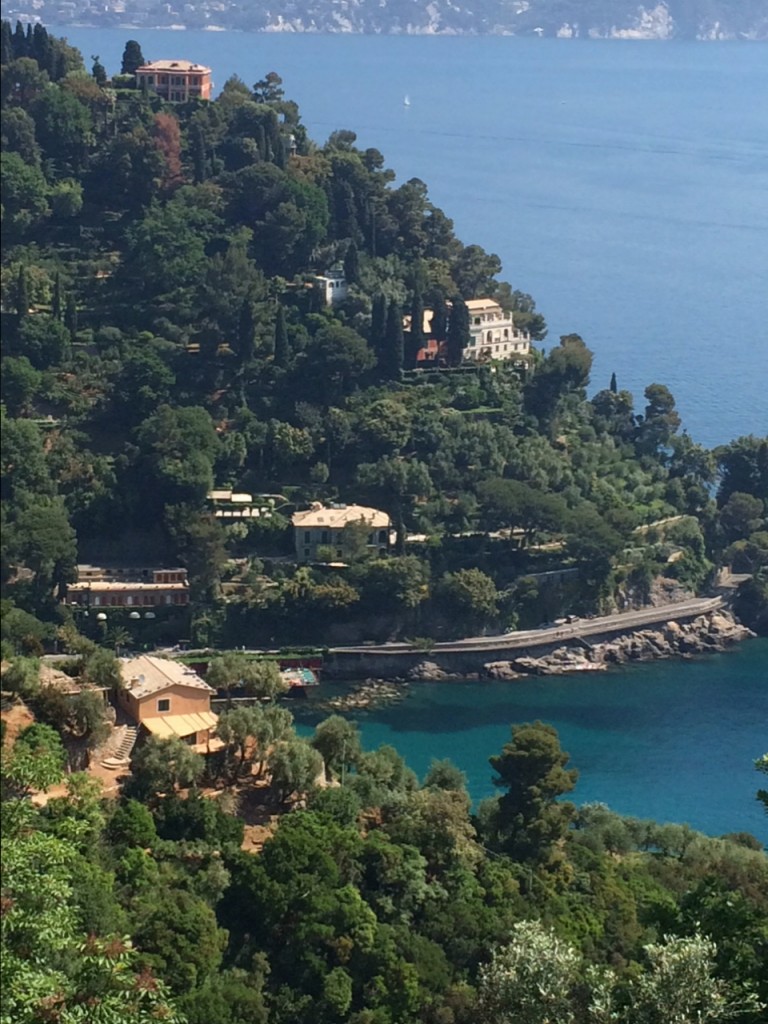
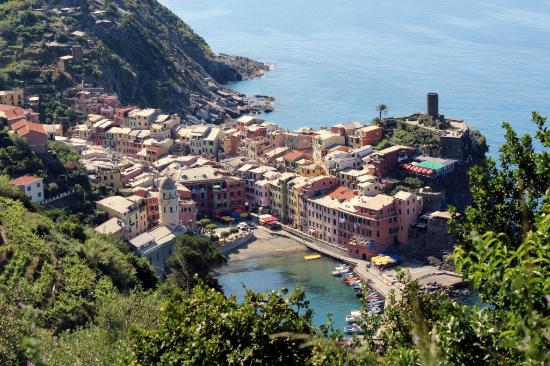
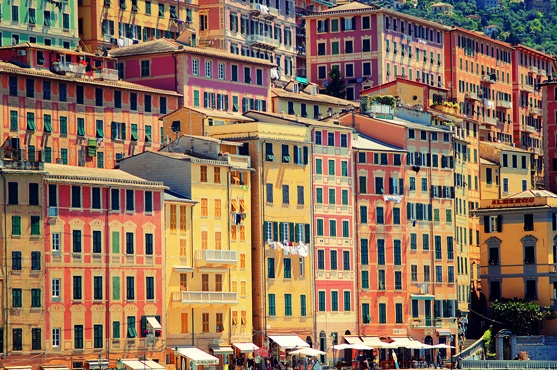
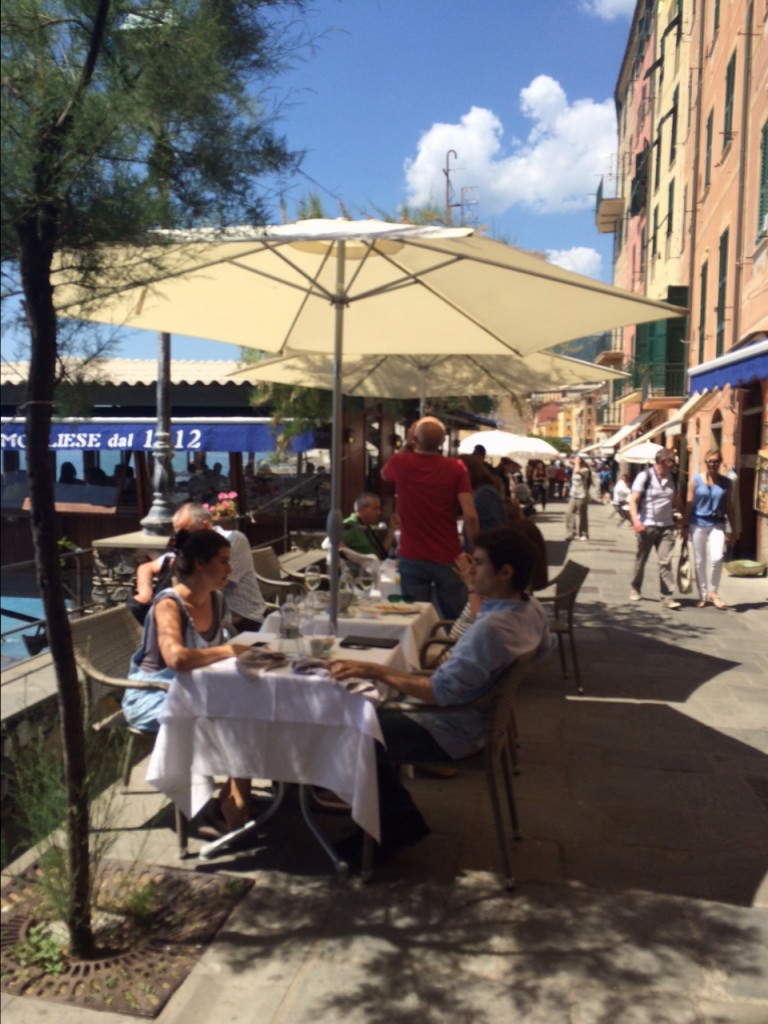
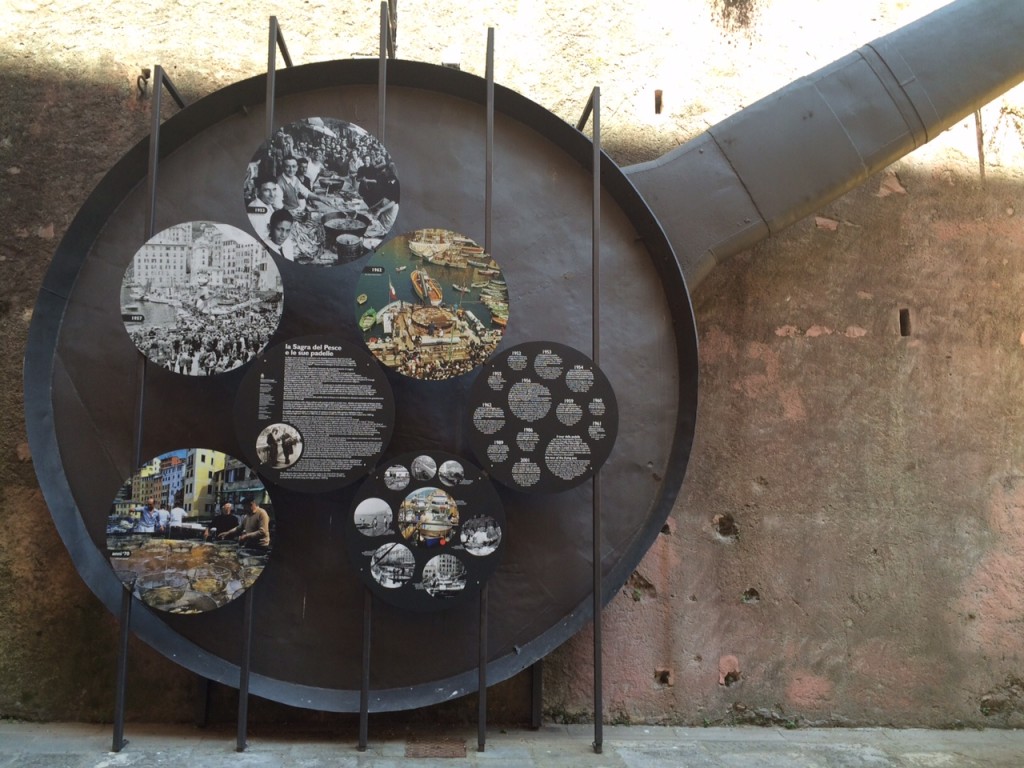
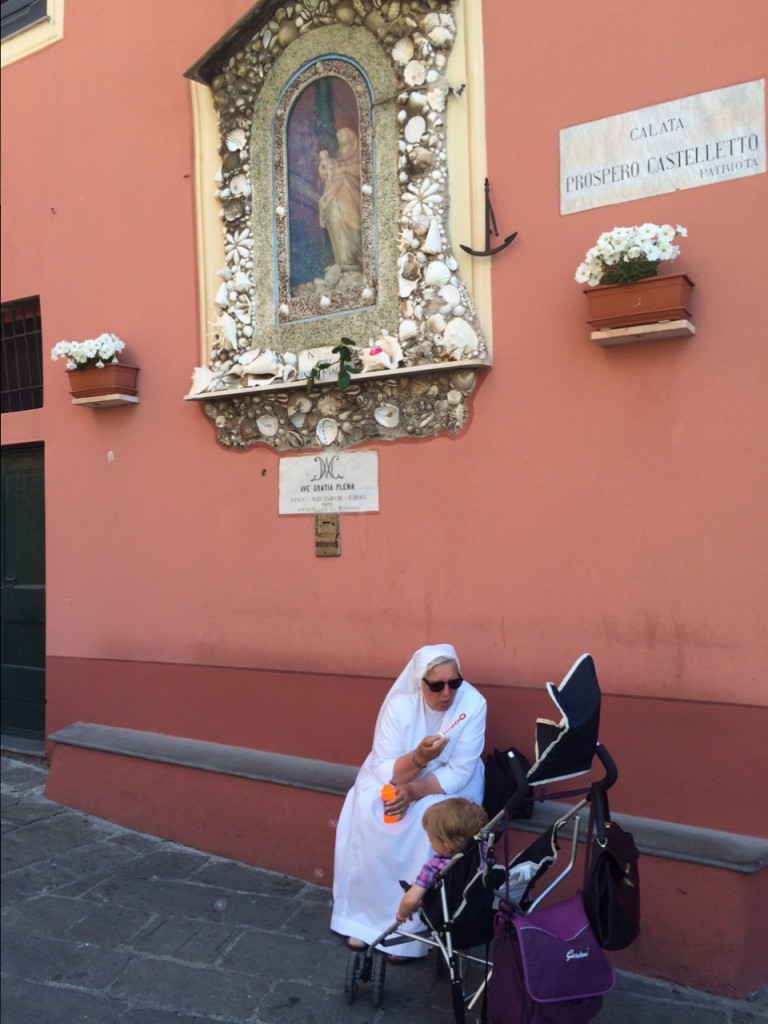
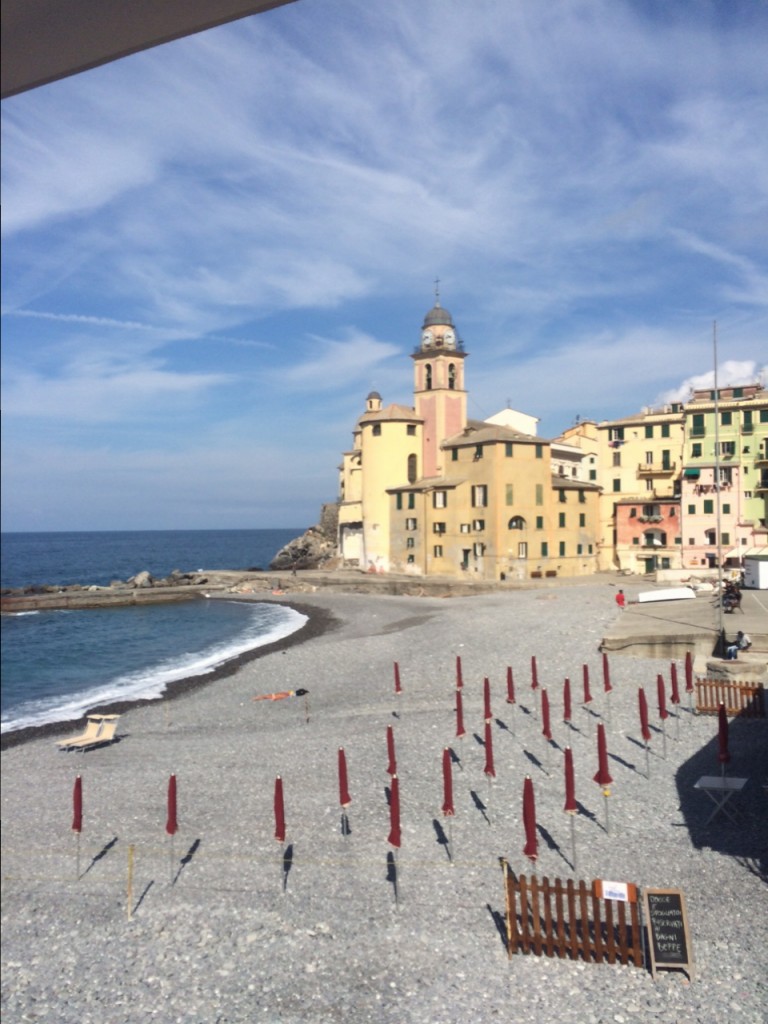
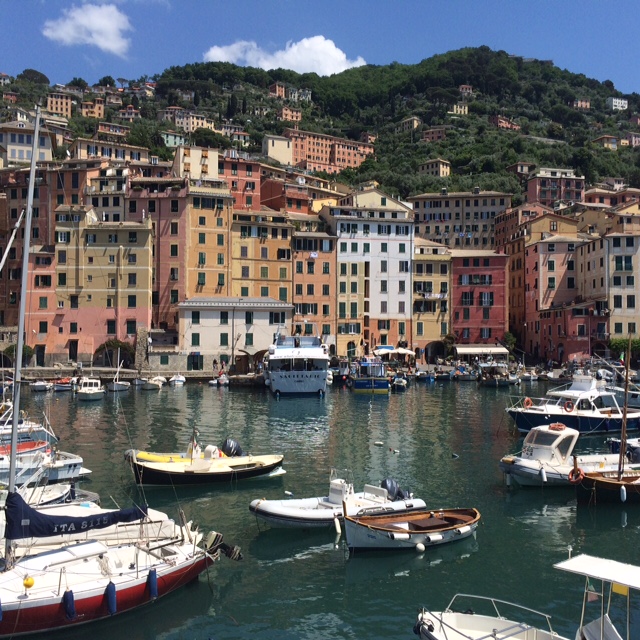
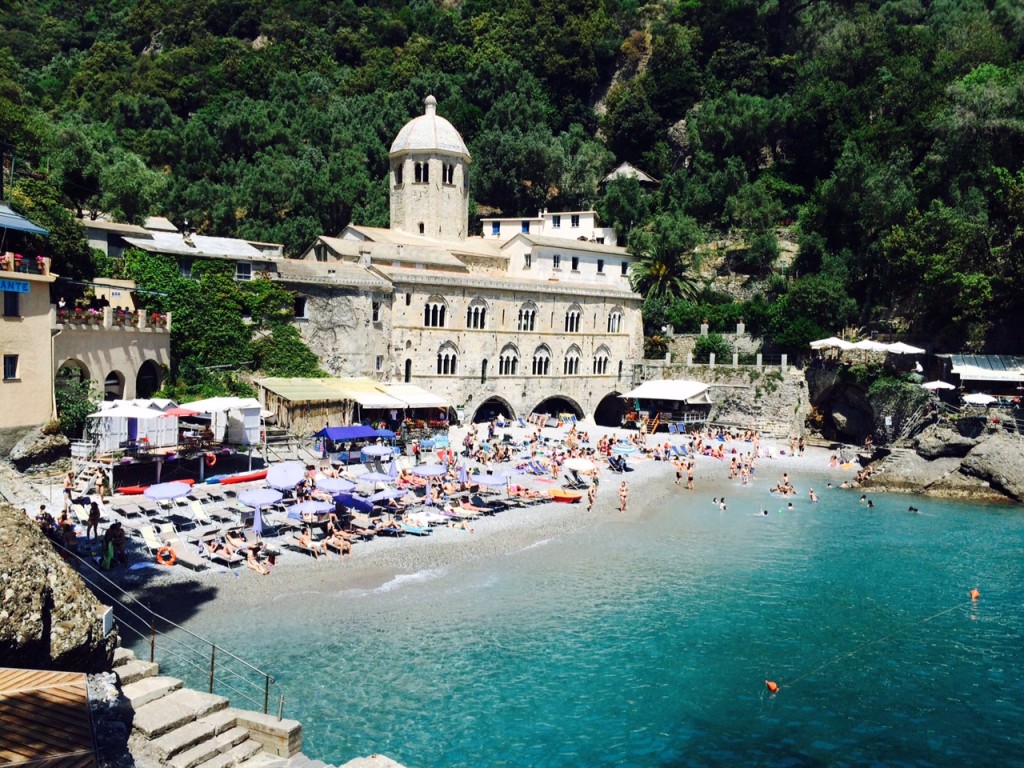
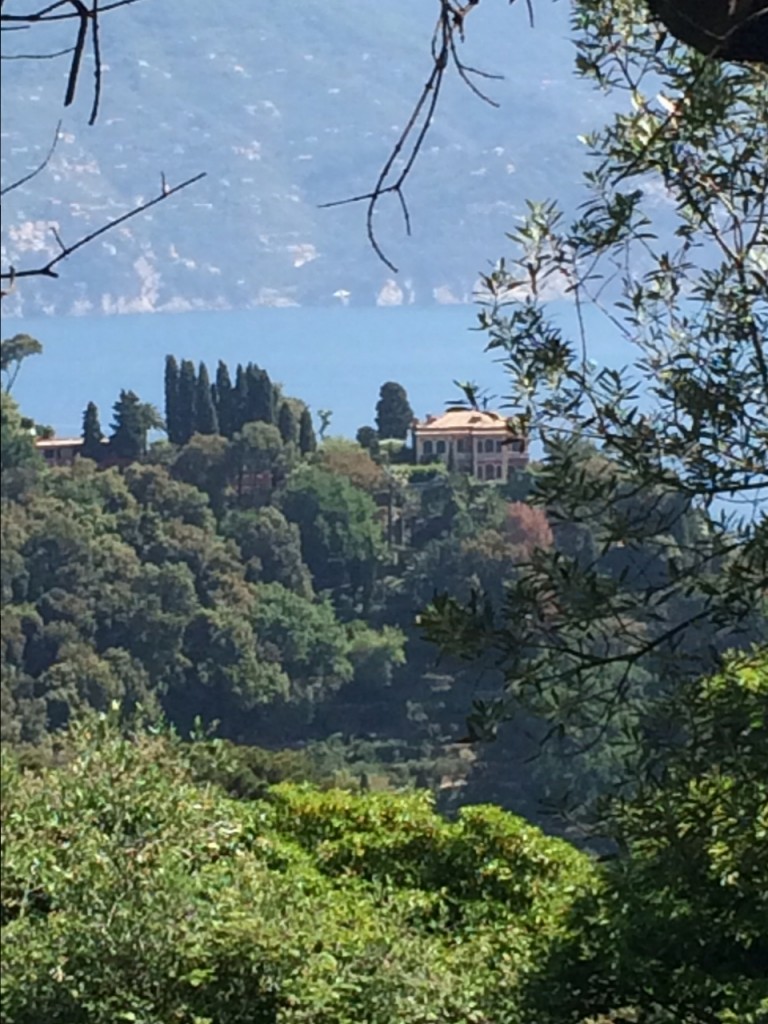
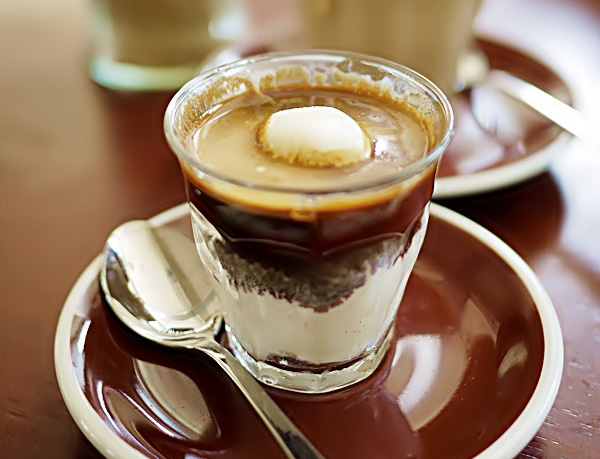
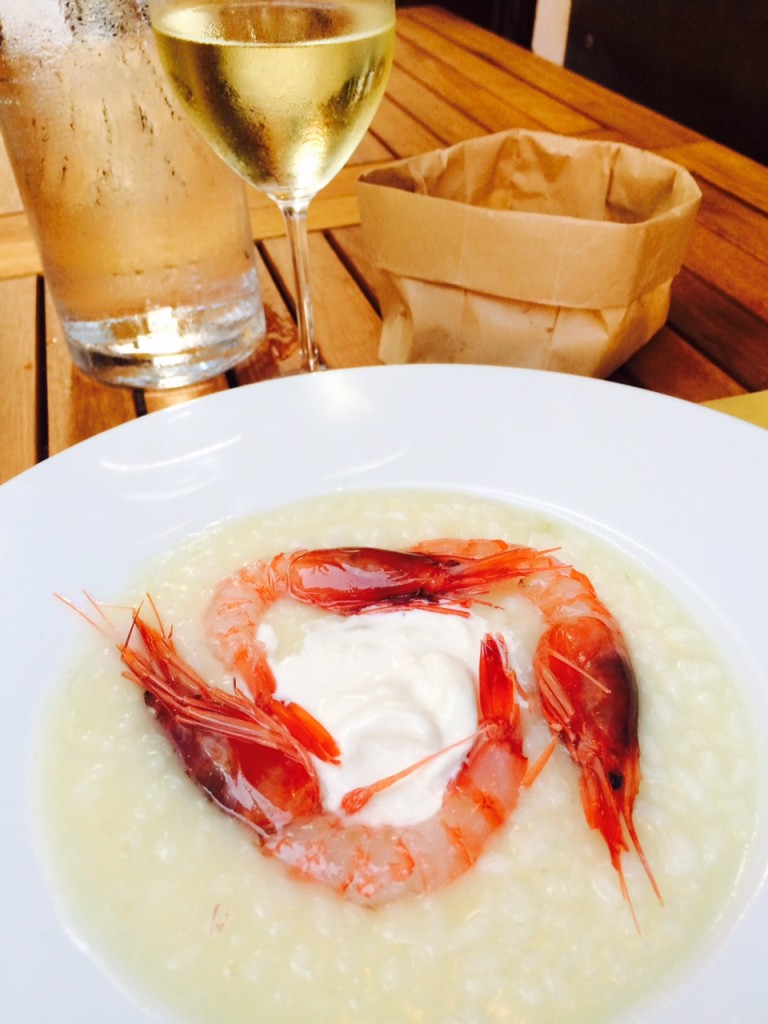
Such beautiful scenery. Those lucky italians. Thank you for sharing the secret.
Yes Janet – they sure are blessed with a magnificent landscape, apart from all the art, history and culture – and also ‘la lingua’
Boy does this bring back memories. A few years ago I stayed in Bogliasco, next to Nervi, and I went to Camogli 3-4 times. One day was for La Festa dei Pesci and I saw the grande padella in action. Also brought my sister there and we took the ferry to San Fruttoso. It was a special time.
Cheers
Hi Linda,
Gosh, I wish I’d been there for La Festa die Pesci and the grande padella – I guess it’s held at Easter?
I’m pleased it brought back memories for you.
Sheridan 🙂